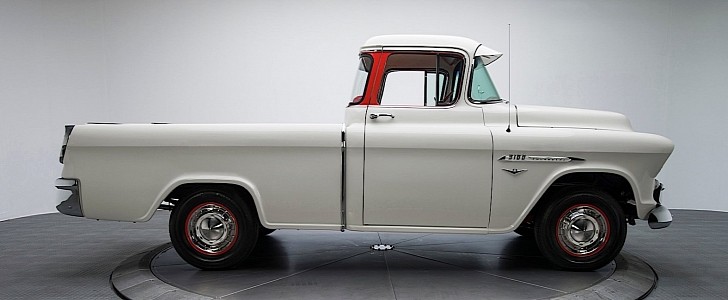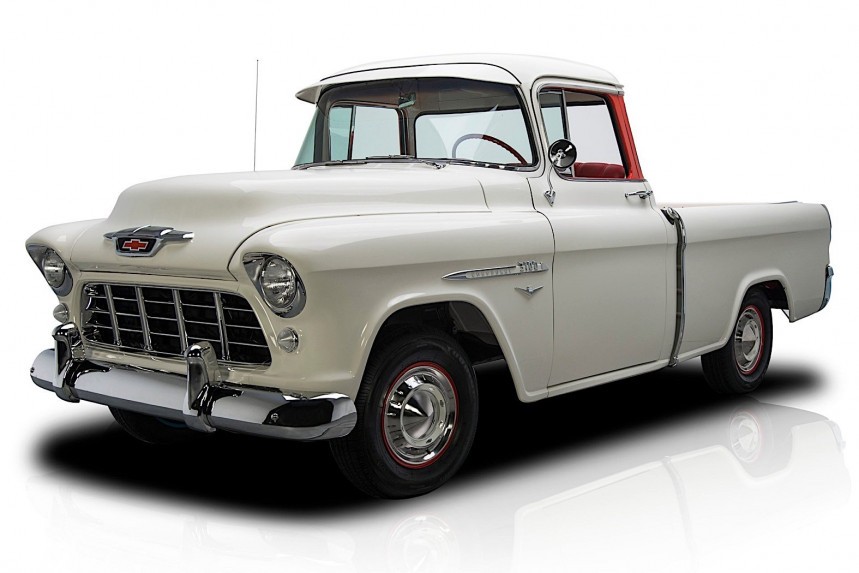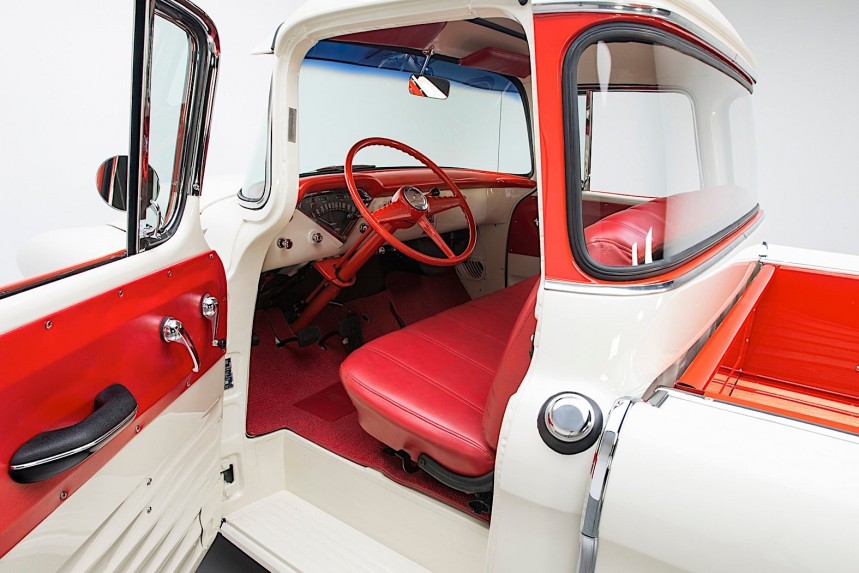Before 1955, pickup trucks were a means to an end. As beasts of burden, they were relegated to farm and municipal work, while cars dominated the market for a growing middle class. That all changed when Chevy introduced something unprecedented.
A truck is a truck, right? That’s how GM’s upper management viewed their target audience in the early 50’s. Enter a young designer named Chuck Jordan. While he was in the Air Force in 1952, the trucks on the flightline were spartan at best. This made him dream of something stylish and sleek, the opposite of a typical workhorse. A cameo is defined as an unexpected appearance by a celebrity, and he wanted this truck, named exactly that, to evoke the same fond emotions.
Thanks to the upward mobility offered by the post-war economy, his ideal customers would be executives, bosses, and managers. They would need the occasional ability to jump in on the jobsite, so the mechanicals had to be rugged. Chevy was preparing an all-new truck lineup for mid 1955, so his starting point was a short bed, half-ton “Second Series” pickup.
For a bit of trivia, Chevrolet carried over the old 1954 design into early ‘55, and these are known as “First Series”. The “Second Series” was a clean-sheet design that evolved through yearly changes and ran until the C10 debuted in 1960.
Initially, his sketches included a cargo box integrated with the cab as one piece. Not only would it be expensive, but engineers also warned of stress cracks forming when performing normal truck activities. Knowing it would be a low production run, he looked to Corvette for inspiration. Moulded Fiberglass of Ohio supplied many panels for the Corvettes, so they offered their expertise.
By omitting the rear fenders, they had a blank canvas to craft the world’s first smooth cargo box. New fiberglass bedsides extended forward to approach the cab, and chrome was used to mark the transition. On the other end, the ends of the bed were capped by taillights from the 1954 Bel Air. Instead of resisting such a bold design, GM quickly gave it the green light.
While steel remained on the inside to preserve the truck’s utility, the tailgate was also skinned in fiberglass and supported by spring-loaded wire retractors. Perhaps the best feature is the rear bumper. The center section (including the license plate) is hinged, and it opens to reveal the spare tire. We need novelties like this again!
It also marked the first time Chevy had offered two distinct cab configurations. The base model had a tiny rear window, so the Cameo was optioned with the Deluxe cab. It arrived with a wraparound windshield and a massive rear window, with chrome separating the 2-tone paint (another industry first). Owners could enjoy the luxuries of dual sun visors, a push-button radio, and a gauge cluster borrowed from the Corvette. Perhaps the best luxury of all was carpet, something never seen in a truck before.
Every 1955 example was white with red contrasts, which continued through the interior. Buyers could opt for the new 265 V8 (4.3L) along with a classy automatic transmission. Beating all expectations, they sold 5,220 examples, and that got Ford’s attention. While a base model truck was $1,670, the Cameo had a sticker price of $2,150, proving buyers would pay more for unprecedented amenities.
Ford introduced their Styleside in ‘57 at a more reasonable price, so the writing was on the wall. Chevy responded with a new Fleetside steel bed in late ‘58, ending Cameo production at almost 10,000 trucks.
These innovations were so bold that GMC wanted in on the action. Their “Suburban Carrier” had unique bumpers along with Pontiac power, making it one of the first badge-engineered Americans. Less than 1,000 were built, making them one of the most coveted classic pickups.
Today’s luxury truck market is hotter than ever, so the next time you see a flashy truck remember where it all began.
Thanks to the upward mobility offered by the post-war economy, his ideal customers would be executives, bosses, and managers. They would need the occasional ability to jump in on the jobsite, so the mechanicals had to be rugged. Chevy was preparing an all-new truck lineup for mid 1955, so his starting point was a short bed, half-ton “Second Series” pickup.
For a bit of trivia, Chevrolet carried over the old 1954 design into early ‘55, and these are known as “First Series”. The “Second Series” was a clean-sheet design that evolved through yearly changes and ran until the C10 debuted in 1960.
Initially, his sketches included a cargo box integrated with the cab as one piece. Not only would it be expensive, but engineers also warned of stress cracks forming when performing normal truck activities. Knowing it would be a low production run, he looked to Corvette for inspiration. Moulded Fiberglass of Ohio supplied many panels for the Corvettes, so they offered their expertise.
While steel remained on the inside to preserve the truck’s utility, the tailgate was also skinned in fiberglass and supported by spring-loaded wire retractors. Perhaps the best feature is the rear bumper. The center section (including the license plate) is hinged, and it opens to reveal the spare tire. We need novelties like this again!
It also marked the first time Chevy had offered two distinct cab configurations. The base model had a tiny rear window, so the Cameo was optioned with the Deluxe cab. It arrived with a wraparound windshield and a massive rear window, with chrome separating the 2-tone paint (another industry first). Owners could enjoy the luxuries of dual sun visors, a push-button radio, and a gauge cluster borrowed from the Corvette. Perhaps the best luxury of all was carpet, something never seen in a truck before.
Every 1955 example was white with red contrasts, which continued through the interior. Buyers could opt for the new 265 V8 (4.3L) along with a classy automatic transmission. Beating all expectations, they sold 5,220 examples, and that got Ford’s attention. While a base model truck was $1,670, the Cameo had a sticker price of $2,150, proving buyers would pay more for unprecedented amenities.
These innovations were so bold that GMC wanted in on the action. Their “Suburban Carrier” had unique bumpers along with Pontiac power, making it one of the first badge-engineered Americans. Less than 1,000 were built, making them one of the most coveted classic pickups.
Today’s luxury truck market is hotter than ever, so the next time you see a flashy truck remember where it all began.
















